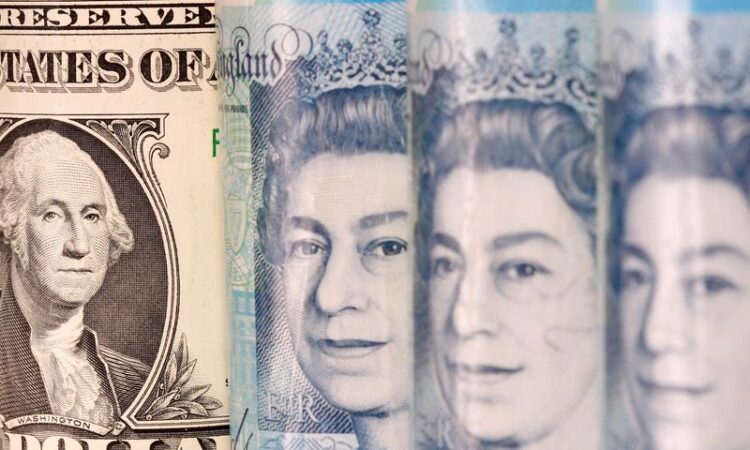
By Amanda Cooper
LONDON (Reuters) – The U.S. dollar is very much in the driving seat of the foreign exchange market right now, but there is another currency reeling in yield-hungry traders just as the Federal Reserve and a raft of other central banks prepare to cut rates: the pound.
British consumers, businesses and politicians might be feeling gloomy about the prospect of UK interest rates remaining high for quite a bit longer than elsewhere – not least because inflation has proven much stickier.
But for currency traders, it is a boon. At 5.25%, UK rates are among the highest in the Group of 10 (G10) major economies, bar those in New Zealand and the United States, at 5.5%.
The Bank of England is adamant that inflation is too far above its 2% target to risk a premature cut, and data this week, if in line with expectations, is unlikely to move the dial.
Meanwhile, investors are preparing for the Fed to possibly cut as early as May, along with the European Central Bank, while across emerging markets, the rate cycle has already tilted towards cuts.
Buying a low-yielding currency to invest in a higher-yielding one – known as a carry trade – is a long-established way to exploit differences in interest rates and with its higher-for-longer sheen, the pound is a clear target.
“Sterling is very much benefitting from carry. It’s one of the best-performing carry trades in the G10 because our interest rates are expected to stay higher for longer,” XTB research director Kathleen Brooks said.
The pound was the second-best performing currency against the dollar in 2023 after the Swiss franc, with a gain of 5.2% – a far cry from the 15% slump in 2016, when the Brexit vote took place, or 2022’s 11% drop, when a proposed budget of former Prime Minister Liz Truss sent UK markets into crisis.
So far this year, sterling has been the least-weakest major currency against the dollar, with a loss of just 0.7%, versus a 5.75% drop in the biggest laggard – the negative-yielding Japanese yen.
The yield on Britain’s benchmark 10-year gilt, at 4.1%, is one of the highest in the G10, behind only 10-year U.S. Treasuries and 10-year New Zealand government debt.
In fact, the premium of UK government bond yields over those in the rest of the G10 is at an average 110 basis points right now, compared with an average of just 20 basis points over the last 10 years, according to LSEG data.
Bank of America currency strategist Kamal Sharma said in a recent note that the bank was recommending sterling-based investors to consider raising their hedges.
“With one of the highest policy rates in G10 and our expectation that the Bank of England will be the slowest to normalize policy, theory tells us that this should be fertile ground for FX outperformance,” he wrote.
Currencies often used to fund carry trades such as the yen and Swiss franc – which has lost 4% in value in 2024 – continue to underperform, he added.
One gauge of carry activity is weekly positioning data from the U.S. Commodity Futures Trading Commission. These show speculators hold a long sterling position worth $2.71 billion – one of the largest in the last 10 years.
Stripping out the euro, which is the most widely traded currency against the dollar and can distort the picture, the pound boasts the largest bullish G10 position against the dollar, followed closely by the Mexican peso, supported by a 11.25% interest rate.
Buying the yen against the New Zealand dollar has always been one of the most popular carry trades. But the kiwi is far less liquid than sterling, which can inject an extra layer of risk in a volatile trading environment.
The pound accounts for roughly 13% of daily turnover in the foreign exchange market, compared with about 1.7% for the kiwi, according to the latest data from the Bank for International Settlements.
(Editing by Alun John and Mark Potter)



